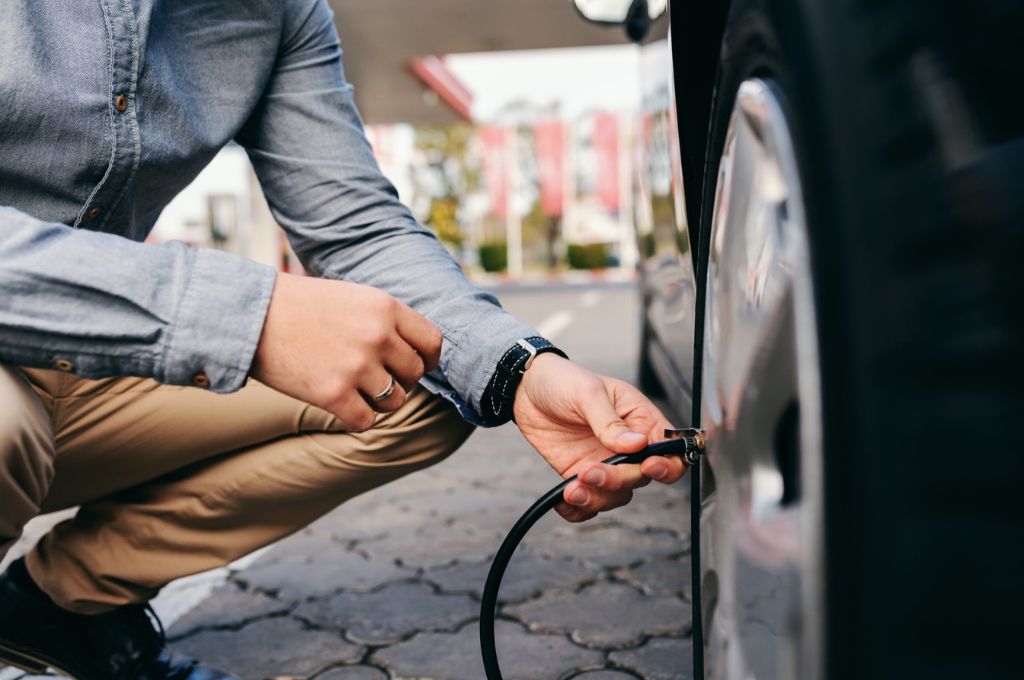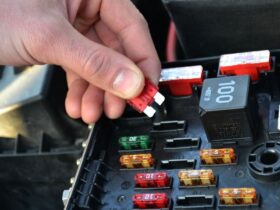How to Put Air in Car Tires is a simple yet essential skill every car owner should know. Maintaining the right tire pressure not only improves safety and fuel efficiency but also extends the life of your tires. Driving with under-inflated tires can reduce handling control, lower gas mileage, and cause faster wear. On the other hand, over-inflated tires can increase the risk of a dangerous blowout. Learning how to put air in car tires ensures your vehicle performs smoothly and safely on the road.
In this complete guide, we’ll walk you through the steps of filling your car tires with air, share helpful tips, and explain why maintaining proper tire pressure is so important.
Why Is Tire Inflation Important?
Before learning how to put air in car tires, let’s take a quick look at why tire pressure matters:
- Safety: Tires with low air pressure can lead to poor handling, longer stopping distances, and a higher risk of tire blowouts.
- Fuel Efficiency: Properly inflated tires minimize rolling resistance, helping to boost fuel efficiency and save you money on gas.
- Tire Longevity: Maintaining the correct tire pressure helps prevent uneven wear and extends the life of your tires.
- Environmental Impact: Well-inflated tires can help reduce your car’s overall environmental impact by improving fuel efficiency.
How to Check Tire Pressure
Before inflating your tires, it’s important to determine if they require air. Here’s how you can check:
- Locate the Valve Stem: The valve stem is a small rubber or metal tube attached to your tire. It’s usually located on the outer edge of the wheel.
- Use a Tire Pressure Gauge:
- Insert the gauge onto the valve stem and press Securely firmly until you hear a brief “hiss” of air.
- Read the number on the gauge to determine the tire pressure.
- Compare the Reading to the Manufacturer’s Recommendation:
- You can usually find the recommended tire pressure on the tire placard Situated on the driver’s side door jamb or in your vehicle’s owner’s manual.
- The unit of measurement will often be PSI (pounds per square inch).
If your tire pressure is lower than the recommended PSI, it’s time to add air.
Tools You’ll Need
To understand how to put air in car tires, you’ll need a few basic tools:
- Tire Pressure Gauge: To check the current air pressure in your tires.
- Air Compressor or Pump: You can use a portable air compressor or take your car to a gas station That provides air pumps.
- Tire Valve Cap: If the valve cap is missing or damaged, it’s best to replace it after inflating your tire.
Step-by-Step Guide: How to Put Air in Car Tires
Step 1: Prepare Your Car
- Park the Car: Park your car on a flat surface to ensure an accurate tire pressure reading.
- Check All Tires: It’s essential to check all four tires. Don’t forget the spare tire!
Step 2: Remove the Valve Cap
- Unscrew the Valve Cap: Using your hand, unscrew the cap from the valve stem. Please place it in a safe spot so you don’t lose it.
Step 3: Attach the Air Hose
- Connect the Hose to the Valve Stem: Attach the nozzle of the air compressor or pump to the valve stem. You may hear a brief hiss of air as you connect the Hose.
- Lock the Hose in Place: Some air compressors have a locking mechanism that keeps the Hose attached to the valve stem during inflation.
Step 4: Add Air
- Start Inflating: Turn on the air compressor. Most compressors will automatically stop once the tire reaches the desired pressure.
- Monitor the Pressure: If you’re using a manual air pump, periodically check the pressure with your tire gauge to avoid over-inflating.
Step 5: Check the Tire Pressure
- Use Your Tire Pressure Gauge: After inflating, detach the Hose and quickly check the tire pressure.
- Adjust as Necessary: If the tire pressure is too high, let out a small amount of air by pressing on the valve stem with a tool. If it’s too low, add more air.
Step 6: Replace the Valve Cap
- Screw the Valve Cap Back On: Once the tire is properly inflated, replace the valve cap to prevent dirt or debris from entering the valve.
Step 7: Repeat for Other Tires
- Please move to the Next Tire: Repeat this process for each tire, ensuring they all have the correct pressure.
Common Tire Inflation Mistakes to Avoid
While inflating your car tires is relatively simple, there are a few mistakes you should avoid:
| Mistake | Why It’s Problematic | How to Avoid |
| Over-Inflating Tires | Can cause tire blowouts or poor handling. | Always check the tire pressure with a gauge. |
| Inflating Tires When Hot | Tires naturally expand when they are hot, leading to inaccurate readings. | Check tire pressure when the tires are cold, or wait for the car to cool down. |
| Using Incorrect Tire Pressure | Incorrect tire pressure can cause uneven wear and reduce fuel efficiency. | Always use the manufacturer’s recommended pressure. |
| Neglecting to Check the Spare | A flat spare tire can leave you stranded in an emergency. | Regularly check and inflate the spare tire. |
How Often Should You Check Tire Pressure?
- Monthly Checks: It’s a good practice to check tire pressure once a month and before long trips.
- Before Every Long Trip: Checking your tire pressure before embarking on a long journey can help prevent unexpected problems while driving.
- When You Notice Changes in Handling: If your car starts pulling to one side or you feel it’s harder to handle, check the tire pressure immediately.
Signs That Your Tires Need Air
- Flat or Deflated Appearance: If the tire’s sidewall appears more deflated than usual, it’s time to inflate it.
- Increased Fuel Consumption: Low tire pressure increases rolling resistance, causing your car to use more fuel.
- Frequent Tire Warning Light: If your car’s tire pressure monitoring system (TPMS) lights up, it indicates low air pressure.
Using a Digital Tire Inflator: A Quick Guide
Many people wondering how to put air in car tires prefer using a digital inflator for simplicity and accuracy. Here’s how to use it:
- Set Desired PSI: Use the digital display to set the desired PSI for your tires.
- Attach the Air Hose: Just like a traditional compressor, attach the Hose to the valve stem.
- Start Inflation: Once the Hose is locked and Situated, the digital inflator will automatically add air until the tire reaches the desired pressure.
- Disconnect the Hose: Once done, simply detach the Hose, check the pressure Another time, and replace the valve cap.
Conclusion
Knowing how to put air in car tires and keeping the pressure at the correct level is essential for your vehicle’s safety, performance, and durability. It’s a simple task that can make a big difference in your driving experience. By following this guide, you can ensure that your car’s tires are properly inflated, helping you save money, improve safety, and extend the lifespan of your tires.
Helpful Tips
- Invest in a Digital Tire Gauge: They provide more accurate readings than analog ones.
- Check Tire Pressure When Cold: Cold Tires (haven’t been driven for at least 3 hours) will give a more accurate reading.
- Don’t Forget the Spare: A flat spare tire can leave you stranded in the event of an emergency.
Keeping your tires correctly and properly inflated is an easy, cost-effective way to ensure your car performs optimally. Whether you’re at home or a gas station, taking a few minutes to check and adjust your tire pressure can pay off in the long run. Safe driving!






Leave a Reply